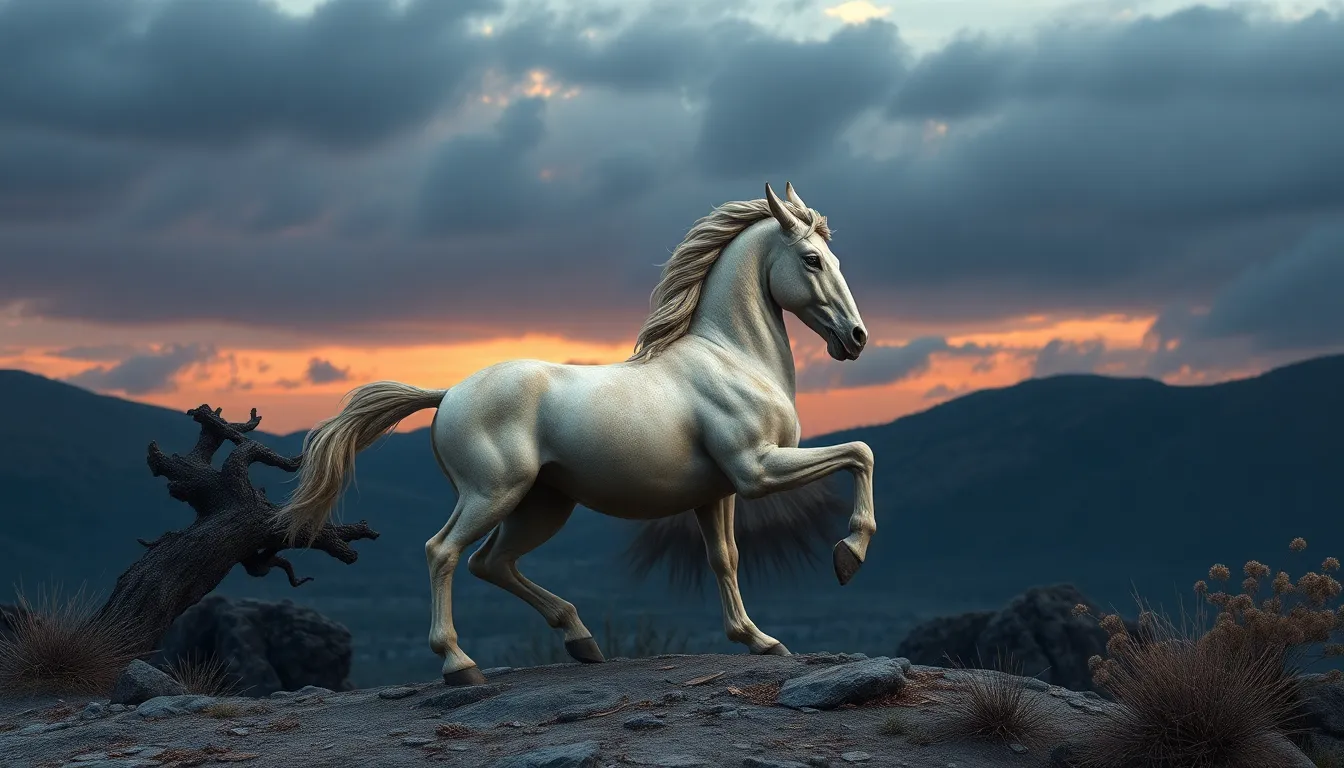The Legacy of Centaurs in Modern Folklore and Myth
I. Introduction
Centaurs are fascinating creatures from ancient mythology, depicted as half-human, half-horse beings. These mythical figures hold a significant place in Greek mythology, often embodying the duality of civilization and savagery, wisdom and chaos. This article explores the enduring influence of centaurs in modern folklore and myth, tracing their journey from ancient narratives to contemporary culture.
II. Historical Origins of Centaurs
Centaurs originated in Greek mythology, where they were depicted as wild and unruly beings, living on the fringes of civilization. Their physical characteristics are striking: they possess the upper body of a man and the lower body of a horse, symbolizing a blend of human intellect and animal instinct.
A. Description of centaurs in Greek mythology
Centaurs are often portrayed as embodying the tension between civilization and savagery, a theme that resonates throughout their stories.
- Physical characteristics: Centaurs typically have a muscular human torso, arms, and head, seamlessly merging into the powerful body of a horse.
- Symbolic meanings: They represent the dualities of human nature—intellect versus instinct, culture versus chaos.
B. Notable centaur figures
Several centaurs are particularly notable in Greek mythology:
- Chiron: Unlike other centaurs, Chiron was wise, kind, and skilled in medicine, often teaching heroes such as Achilles and Asclepius.
- Nessus: A more savage centaur, Nessus is infamous for his role in the death of Hercules, demonstrating the darker aspects of centaur nature.
III. Centaurs in Literature and Art
Centaurs have been depicted in various forms of literature and art throughout history, reflecting the evolving perceptions of these creatures.
A. Examination of centaurs in classical literature
In classical texts, centaurs often serve as symbols of the untamed aspects of humanity. They appear in works by:
- Homer: In the “Iliad,” centaurs are mentioned as beings who are both noble and savage.
- Hesiod: His works explore the chaotic nature of centaurs, illustrating the struggle between order and disorder.
B. Evolution of centaur representations in Renaissance and Baroque art
During the Renaissance, artists like Leonardo da Vinci and Peter Paul Rubens portrayed centaurs in more complex and humanized ways, often highlighting their tragic nature and inner conflict.
C. Modern literary portrayals of centaurs in fantasy and young adult fiction
In contemporary literature, centaurs have found new life in fantasy genres, appearing in works such as:
- “The Chronicles of Narnia” by C.S. Lewis: Here, centaurs are depicted as noble warriors and wise beings.
- “Percy Jackson” series by Rick Riordan: Centaurs like Chiron are portrayed as mentors to young heroes, blending ancient myth with modern storytelling.
IV. Centaurs in Contemporary Popular Culture
In modern media, centaurs continue to capture the imagination of audiences across various platforms.
A. Analysis of centaurs in film and television
Films and television shows have embraced centaurs, often portraying them in fantastical settings:
- “The Chronicles of Narnia”: The centaur character, Glenstorm, is a key player in the battle against evil.
- “Hercules”: The animated film features centaur characters who add depth to the story’s mythological landscape.
B. Their role in video games and tabletop RPGs
Centaurs also appear in video games and tabletop RPGs, where they serve as playable characters or adversaries:
- Dungeons & Dragons: Centaurs are often depicted as noble warriors or guardians of nature, with unique abilities and lore.
- Video games: Titles like “The Elder Scrolls” series feature centaur-like creatures, enriching the game’s mythology.
C. Influence on comic books and graphic novels
In comic books and graphic novels, centaurs have been reimagined in various forms, often reflecting contemporary themes and issues.
V. Symbolism and Themes Associated with Centaurs
The centaur archetype holds deep symbolism in modern storytelling, often used to explore complex themes.
A. Exploration of the centaur archetype in modern storytelling
Centaurs embody the struggle between civilization and nature, often representing:
- Inner conflict and duality
- The quest for identity and belonging
- The balance between intellect and instinct
B. Themes of identity, duality, and the human condition
The stories of centaurs resonate with contemporary audiences, as they reflect the complexities of human nature and the challenges of modern life.
C. The centaur as a symbol of nature versus civilization
Centaurs often symbolize the tension between the natural world and human society, prompting discussions on environmentalism and the human experience.
VI. Cultural Variations and Adaptations of Centaur Myths
Centaurs have counterparts in various cultures, illustrating the universal themes they embody.
A. Comparison of centaur-like beings in non-Greek cultures
For instance, in Indian mythology, the “Kinnaras” are half-human, half-animal beings who embody similar themes of duality and harmony.
B. Adaptations and reinterpretations in different cultural contexts
These beings have been adapted in various ways, reflecting the values and beliefs of different societies.
C. The global legacy of centaur mythology
The enduring legacy of centaur mythology can be seen in various forms of art, literature, and cultural narratives worldwide.
VII. The Future of Centaur Mythology
As society evolves, so too does the representation of centaurs in media and culture.
A. Predictions for the evolution of centaur figures in emerging media
With advancements in technology, centaur figures may evolve in digital storytelling, virtual reality, and interactive media.
B. The role of centaurs in addressing contemporary issues
Centaurs may serve as powerful symbols in discussions surrounding:
- Environmentalism and conservation
- Identity politics and the human experience
C. Potential for centaur mythology in future folklore and storytelling
The flexibility and depth of centaur mythology suggest that they will continue to inspire stories that resonate with future generations.
VIII. Conclusion
The journey of centaurs from ancient myth to modern legacy reflects their enduring appeal in culture and society. Their complex nature, embodying both human and animal traits, allows for rich exploration of themes such as identity, duality, and the relationship between civilization and the natural world. As we look to the future, the legacy of centaurs will undoubtedly continue to evolve, inviting new interpretations and stories that resonate with contemporary audiences.




